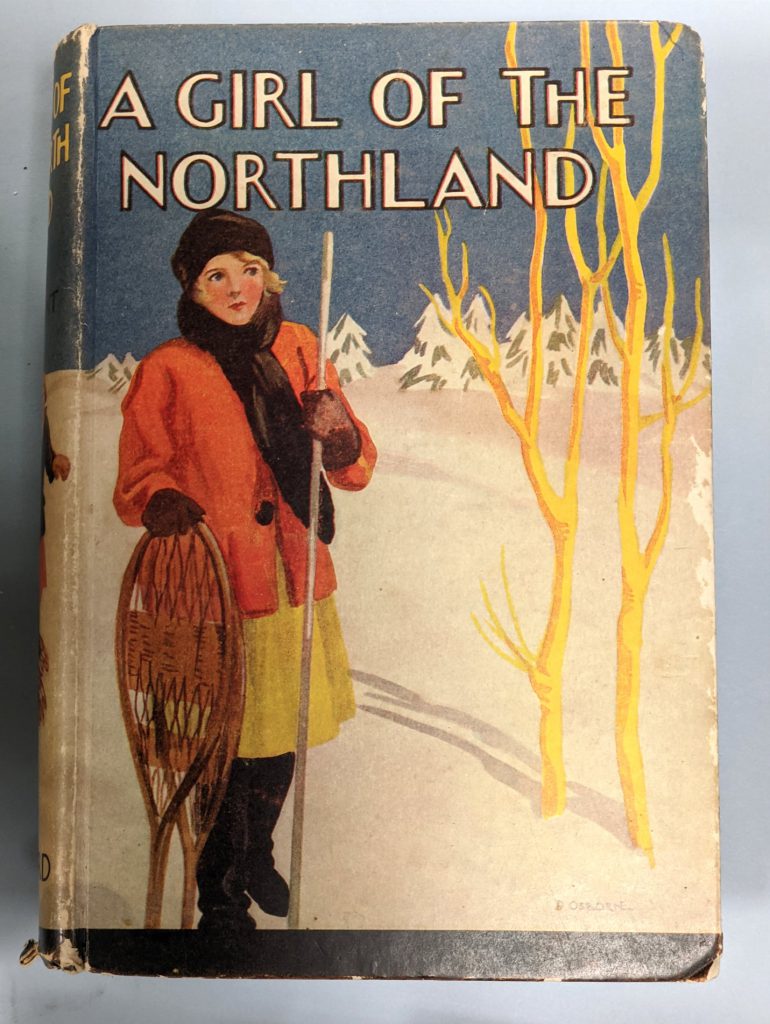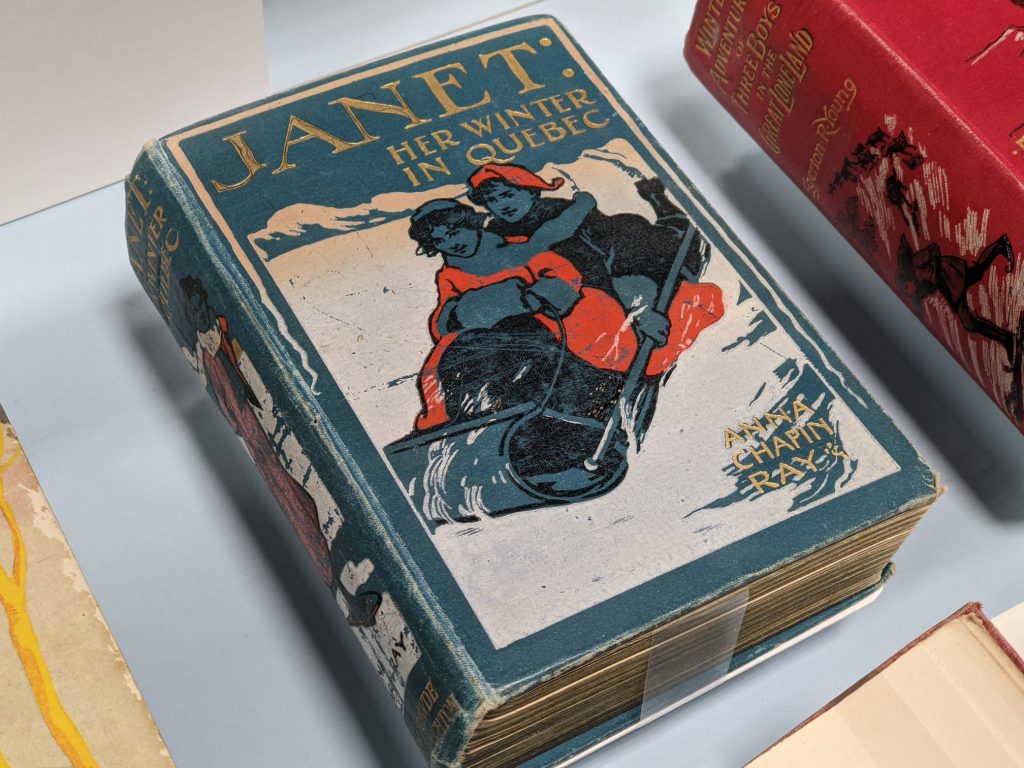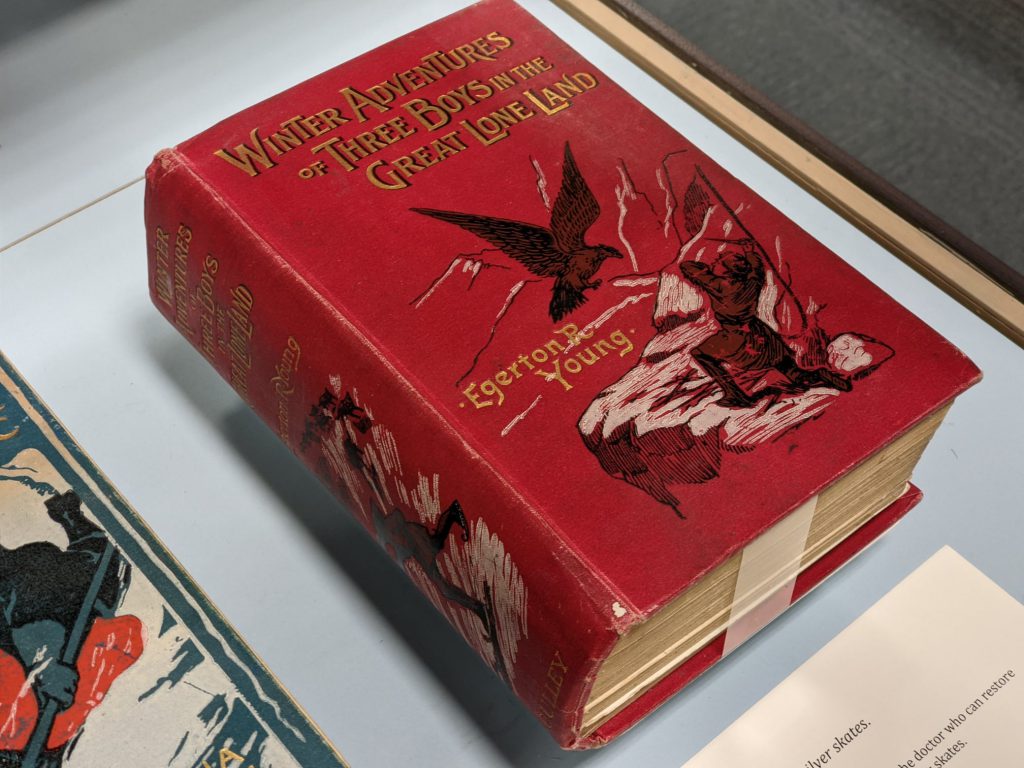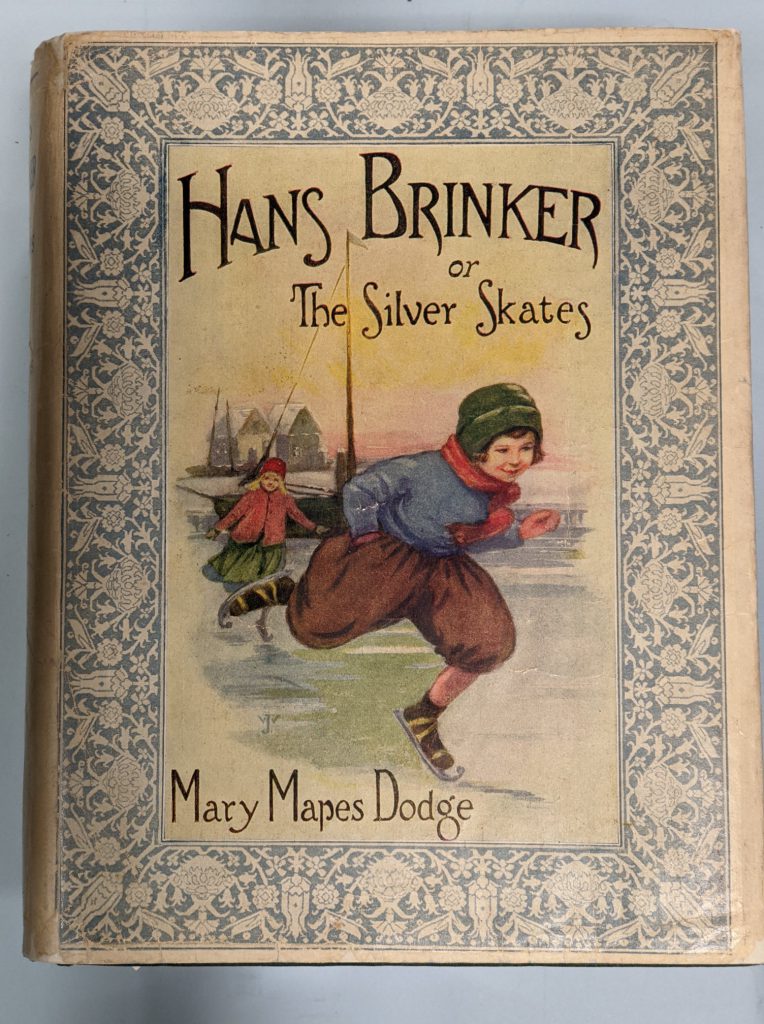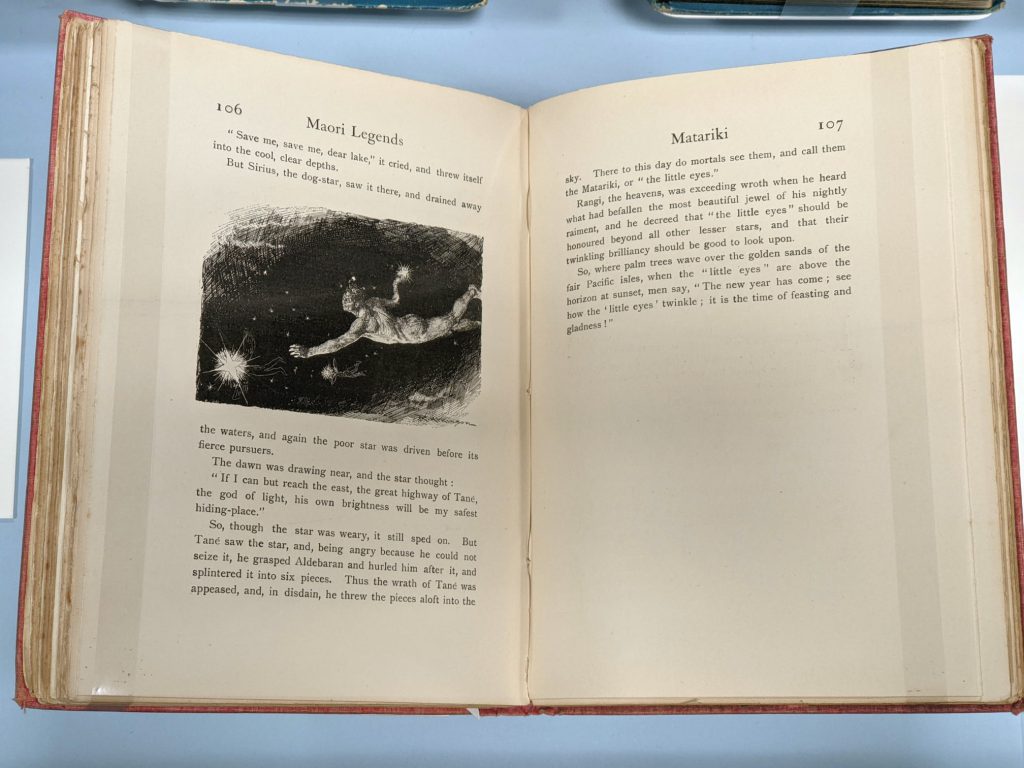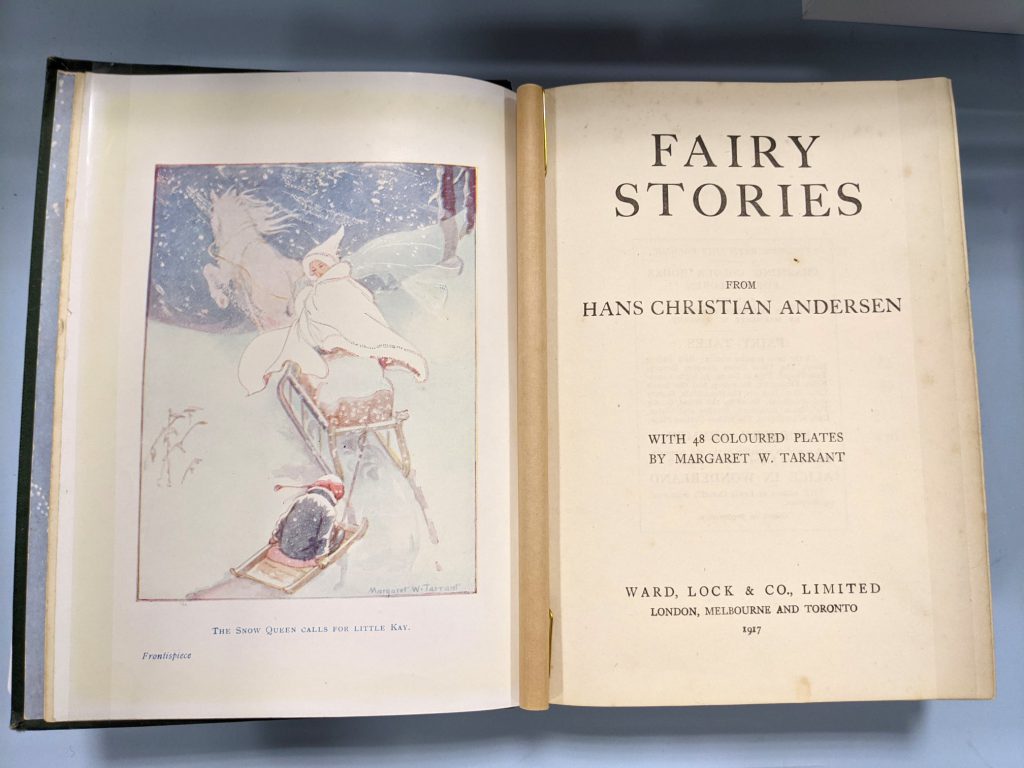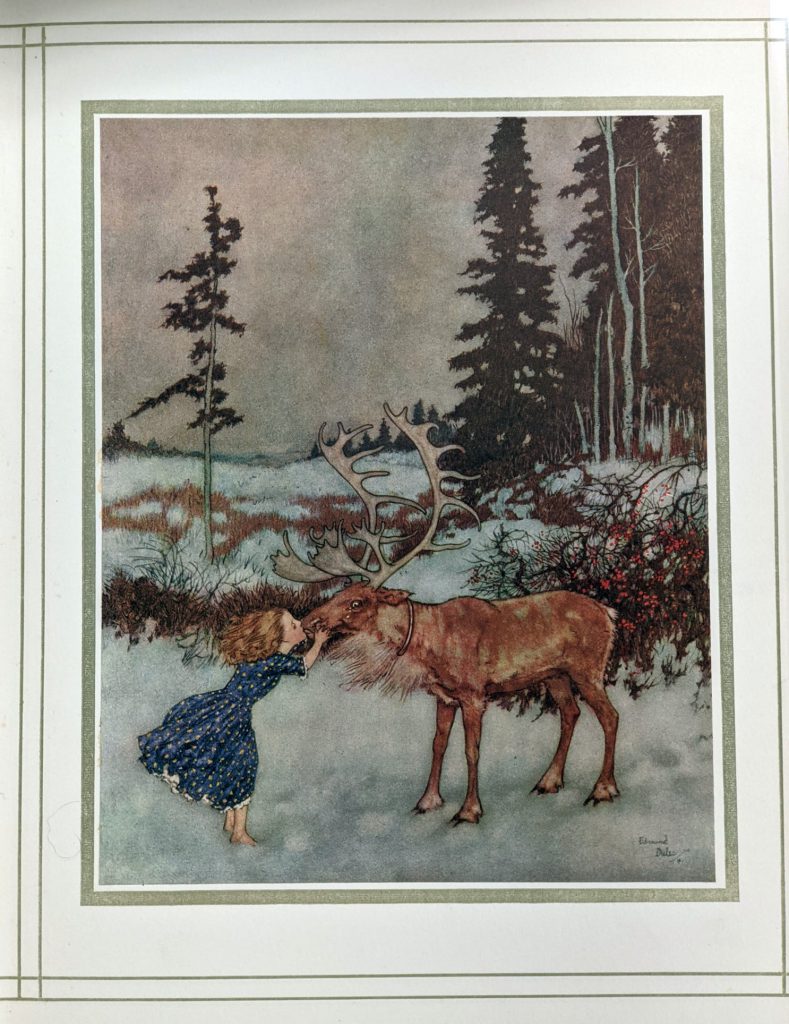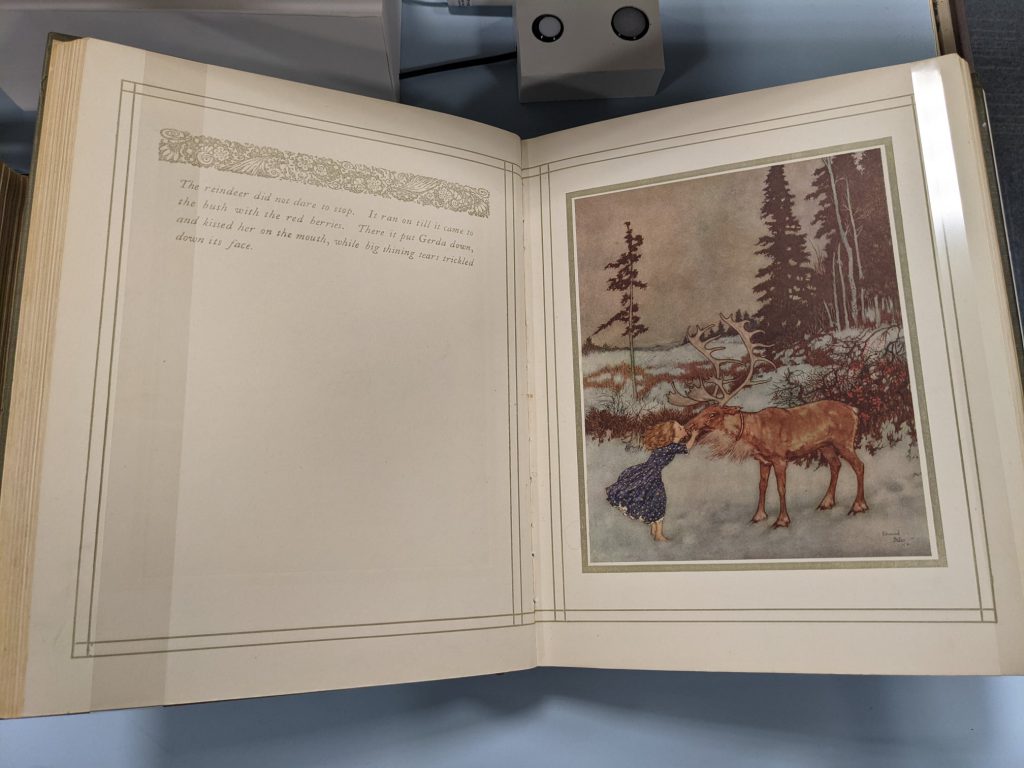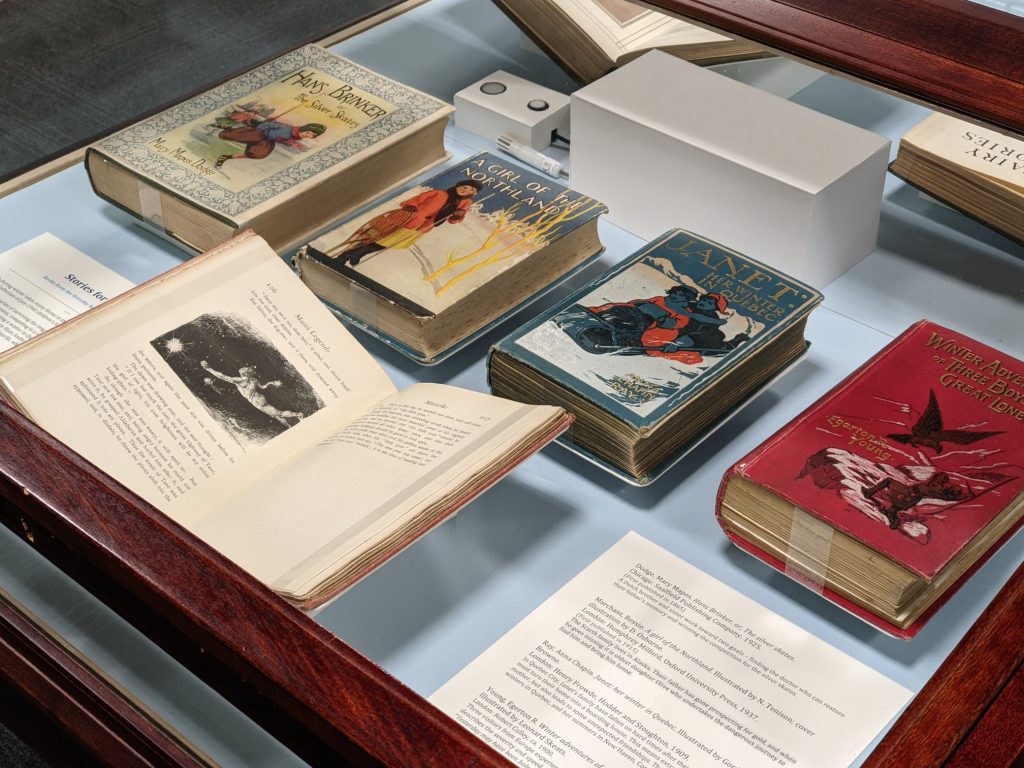Stop by to visit the display on the first floor of the National Library which will be available through September 2021.
Images Left to Right, Top to Bottom:
The Scarth family lives in Alaska. Their father has gone prospecting for gold, and when he goes missing it is oldest daughter Olive who undertakes the dangerous journey to find him and bring him home.
Marchant, Bessie. A girl of the Northland. Illustrated by N. Tenison; cover illustration by D. Osborne.
London: Humphrey Milford, Oxford University Press, 1937.
(First published in 1915)
2
In Quebec City, Janet’s family have fallen on hard times after their father’s death and must turn their home into a boarding house. This means extra work for Janet and her mother, but also leads to some unexpected friendships. The author often spent her own winters in Quebec, and her summers in New Haven, Connecticut.
Ray, Anna Chapin. Janet: her winter in Quebec. Illustrated by Gordon Browne.
London: Henry Frowde, Hodder and Stoughton, 1909.
3
Life during winter takes many forms in these books from the Dorothy Neal White Collection of pre-1940 children’s literature.
Included are stories of surviving the long months of snow in the Canadian and Alaskan wilderness, competing in a skating race in the Netherlands, and friendships formed during a winter in Quebec City. In the realms of fairy tale and mythology there are Hans Andersen’s classic story, ‘The Snow Queen’, and the Māori tale of Matariki, whose appearance in the winter sky heralds the start of a new year.
– Mary Skarott, Research Librarian, Childrens Literature
4
Three visitors from Europe experience a winter in the Canadian wilderness. This extract describes the severity and speed of the onset of winter:
“Yesterday may have been balmy and reposeful, with only a few breezes from the summer South Land. To-day the wild north winds may howl and shriek, while full of frost and pinching cold is the icy, biting air. Yesterday the waves may have been merrily rippling in the sunshine on the beautiful lakes. To-day, after a night of storm and boreal tempest, the ice is rapidly forming, and is binding down in strongest fetters the highest billows.”—p.16.
Young, Egerton R. Winter adventures of three boys in the great lone land. Illustrated by Leonard Skeats.
London: Robert Culley, ca. 1900.
5
A Dutch brother and sister work toward two goals – finding the doctor who can restore their father’s memory and winning the competition for the silver skates.
Dodge, Mary Mapes. Hans Brinker, or, The silver skates.
Chicago: Saalfield Publishing Company, 1925.
(First published in 1865)
6
In one of many stories about the origin of the Matariki star cluster, Tane, with the help of Sirius and Aldebaran, shatters the most beautiful star in the sky into six pieces. Thereafter, they are known as the “little eyes”.
The reappearance of Matariki in the winter sky, visible just before dawn, signals the Māori New Year.
McCosh Clark, Kate. Māori tales & legends. With illustrations by Robert Atkinson.
London: David Nutt, 1896.
7
The Snow Queen, first published in 1844, is one of Hans Andersen’s most complex fairy tales and it is considered by many to be his finest work. The Snow Queen’s world is one of unrelenting ice and cold, but, when Kai is finally rescued by Gerda, winter melts away and they walk home together in the warmth of spring.
Under the Snow Queen’s power, Kai hitches his little sled to her sleigh and is swept away to be held prisoner in her castle.
Andersen, Hans Christian. Fairy stories from Hans Christian Andersen. With 48 coloured plates by Margaret W. Tarrant.
London: Ward, Lock & Co., 1917.
8
On her quest to rescue Kai, Gerda meets many interesting characters, including a very helpful reindeer.
Andersen, Hans Christian. Stories from Hans Andersen. With illustrations by Edmund Dulac.
London: Hodder & Stoughton, 1911.
9
“The reindeer did not dare to stop. It ran on till it came to the bush with the red berries. There it put Gerda down, and kissed her on the mouth, while big shining tears trickled down its face.”
10
Stop by and visit the display on the first floor of the National Library which will be available through September 2021.
